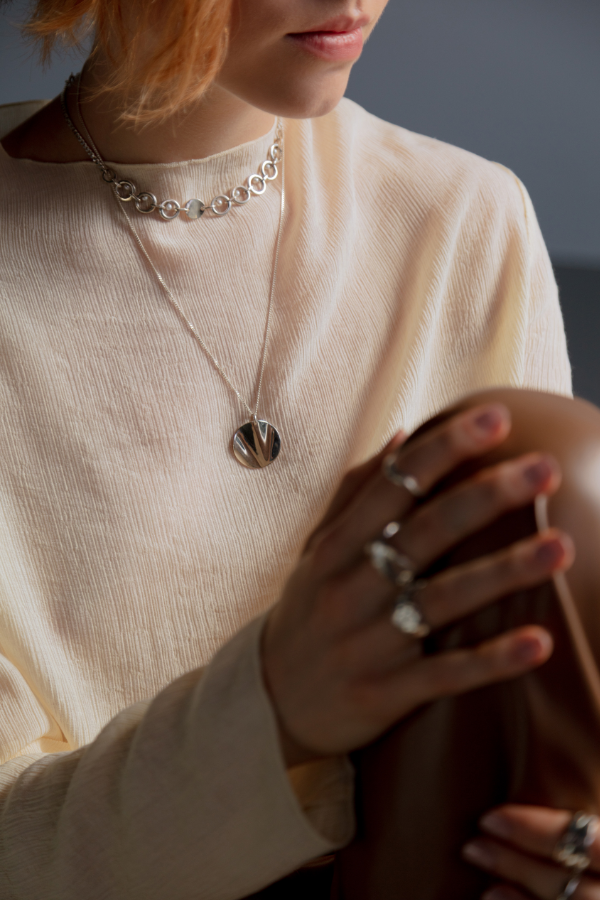
What to Do When Every Design Project Starts to Look & Feel the Same
Summary
Creative fatigue is real—and many interior designers hit a point where every project starts to feel like a variation of the last. Whether it’s driven by trend cycles, social media pressure, or playing it safe with clients, that sense of sameness can signal the need for growth. The antidote? Reconnecting with your creative voice, evolving your brand, attracting more aligned clients, and creating for the joy of it—not just the outcome.
Reflection Questions
What’s a design idea or material you’ve been drawn to lately—but haven’t had the chance (or permission) to explore?
Is your brand and portfolio still a reflection of where you’re going creatively—or just where you’ve been?
How often do you make space to create without client expectations, outcomes, or performance metrics?
Journal Prompt
Think back to a project you were proud of, but didn’t feel creatively stretched by. What would you have done differently if you had full creative freedom? Write about how that version of the project might have looked—and what it tells you about what your creative self is craving now.
You know the look: white oak floors, brass sconces, creamy boucle, a dramatic stone moment somewhere in the powder room. You’ve executed it beautifully—over and over. The photos are polished, the client is thrilled, the likes roll in on Instagram, Pinterest, and TikTok, yet something feels off. You feel uneasy and realize that you might actually be designing the same space again and again. If you have ever felt this way, you are not alone.
Many interior designers—especially those with thriving design firms (and those with a signature aesthetic)—suddenly realize that each new project has felt like déjà vu. This is not because they lack talent or ambition, but because the creative cycle has been flattened by repetition. Even in a portfolio full of successful projects, a lack of dynamism can be troubling.
But what’s really happening when every project starts to blur into the same palette and proportions? More importantly, how do you break free of that repetitive cycle? Here’s what to do when every design project starts to look and feel the same.
Why Does Every Recent Project Seem the Same?
It Could Be the “Trend Trap”
Good taste has become a monoculture. We’re living in an era of accelerated aesthetic turnover. Thanks to social media, what used to evolve slowly now changes seasonally—or even faster. A kitchen style that was daring in 2020 feels tired in 2023. Algorithms favor familiarity. Clients bring screenshots instead of more personal aspirations.
As a result, designers are under immense pressure to produce work that’s visually legible within the current design zeitgeist. You need to be tasteful and timely now. But when every client wants what they saw on Instagram, the palette narrows. The moodboard gets repetitive. And over time, so does the portfolio.
We’re not bashing trends; our team heads to High Point and Round Top every year like the rest of you. Many trends originate in good design thinking and some even solve problems. However, when trends become constant requirements for every single client, the designer’s role shifts from creator to replicator. That shift can leave even the most accomplished creatives feeling uninspired.
Social Media is a Feedback Loop
It’s not just the clients. It’s us, too. Designers post what performs well. Posts that perform well attract more clients who want more of the same. Before you know it, your feed is a curated highlight reel of beige-and-brass sameness—not because you lack ideas, but because the algorithm doesn’t reward experimentation.
And within that loop, it becomes risky to show the weird, the raw, the layered, or the half-finished. Work that’s more conceptual or more personal might not rack up likes, shares, and followers, but it might be exactly what your creative spirit needs.
This creates a strange (and uncomfortable) bind: you crave creative growth, but the ecosystem you’re part (and where clients find you) of keeps nudging you back toward the safe, the marketable, and the already-proven.
You Might Be Delivering Instead of Designing
Interior design lives in a uniquely complex space between art and service. You’re hired for your vision, but ultimately paid to interpret someone else’s preferences, lifestyle, and budget. That tension is manageable until it isn’t.
Over time, many designers start to feel like they’re not really designing anymore. Instead, they’re curating safe choices for risk-averse clients. They’re defending good decisions rather than exploring new ones. They’re answering to a moodboard that wasn’t theirs to begin with.
It’s not that you don’t love the work. It’s that the why behind your designs is getting buried. If that hits home, try not to beat yourself up. Creative malaise can be quite depressing, but it can also mean that you’re ready to evolve.
How Do You Start Designing Unique Spaces Again?
Attract Clients Who Want Your Vision—Not Just Your Portfolio
When you find yourself designing the same space over and over again, chances are that your clients are hiring you for that repetition. They’ve seen your previous work—liked it, pinned it, saved it—and now they want a version of it for themselves. While flattering, this dynamic can quietly trap you in your past. You become the “safe pair of hands” instead of the visionary.
To evolve creatively, your messaging needs to shift from “Here’s what I’ve done” to “Here’s what I believe in.” That starts with articulating a clear point of view. What excites you now—not five years ago? What design decisions do you keep returning to in your personal life, even if they haven’t made it into your client work yet? What creative territory feels slightly out of reach, but thrilling?
Fuel your creative fire & be a part of a supportive community that values how you love to live.
subscribe to our newsletter
*please check your Spam folder for the latest DesignDash Magazine issue immediately after subscription

Then, evaluate how your brand appears online and in print. Are you only sharing your most traditional work because it’s what gets the most likes? Are you using language on your website that plays it safe instead of making a statement? The clients you attract are responding to signals—visual, verbal, and emotional. Make sure those signals are aligned with where you want to go, not just where you’ve been.
Sometimes, that means showing unfinished work, personal projects, or pieces that speak to your design values. Suddenly, you’re attracting clients who love your taste and trust it, too. That’s the difference between replicating a vibe and creating something entirely new.
Create for the Sake of Creating
Client projects can be deeply fulfilling, but they’re rarely without compromise. Budgets, timelines, family dynamics, and practical constraints all shape the outcome. If all your creative energy is spent inside those parameters, you can start to lose touch with your instincts over time.
This is why self-directed creative play is so important. It’s how you stretch, experiment, and surprise yourself. Maybe that looks like styling a vignette in your living room with objects you love but would never use in a client home. Maybe it’s creating a series of concept boards around a fictional brief, or sketching out a boutique hotel you dream of designing one day.
These projects don’t have to be “for” anything. Their purpose is to reignite your sense of exploration. And often, this kind of no-stakes creativity reveals threads of your evolving aesthetic before you even have words for it.
Even sharing this kind of work occasionally—on Instagram Stories, in a newsletter, or in a behind-the-scenes post—can reframe how clients see you. Not just as a designer who delivers, but as a creative voice with a lot to say.
Participate in Editorial or Experimental Work
Showhouses, styled shoots, and collaborative design projects exist in a rare space: they allow you to create something expressive without the weight of client feedback or commercial expectations. And for many designers, these projects are a much-needed antidote to creative stagnation.
They give you full authorship. You can play with color in ways you wouldn’t in a family home. You can source obscure vintage or commission custom pieces without worrying about resale value or maintenance instructions. You can design for the camera instead of the client brief and that freedom can be deeply energizing.
Editorial work also gives you something powerful to show prospective clients: proof of concept. If you’ve been dreaming of designing a more avant-garde dining room or an art-driven pied-à-terre, but haven’t landed the client for it yet, a styled shoot lets you prototype that vision.
And when you share that work publicly, you attract future collaborators who resonate with that direction—photographers, stylists, brands, and yes, clients who want more than what’s already trending.
Let Your Brand Grow Up With You
You’ve grown. Your taste has evolved. The kind of work you want to do has changed. But has your brand?
Often, when designers feel like they’re stuck in a creative loop, the real issue is that their outward-facing identity is lagging behind their internal evolution. Maybe your studio became known for its bright, breezy West Coast minimalism—but now, you’re drawn to a darker, moodier, more tactile design language. If your portfolio, your copy, your social presence, and even your inquiries are still rooted in your earlier style, it’s no wonder the work feels like a remix.
A refresh doesn’t have to mean a total rebrand. Sometimes it’s as simple as refining your tone of voice, updating your project photography to highlight newer work, or rewriting your service descriptions to reflect where your firm is headed. It might mean archiving projects that no longer reflect your direction, or featuring design concepts that show where you want to go next.
And more than anything, it means giving yourself permission to change. Creative businesses evolve. You’re allowed to outgrow what once defined you. Updating your brand will attract the right kind of clients, but that’s not all. This shift will empower you to honor who you are now and create space for what’s next.
Final Thoughts: Sameness Might Feel Safe But It’s a Sign to Try Something New
If every project is starting to feel like a remix of the last, don’t ignore it. That feeling isn’t failure but rather feedback (from yourself). If you respond to that feedback, you might find yourself at the beginning of the most exciting chapter in your design career yet.
If you are indeed feeling that creative itch and maker’s malaise, know that you’re not alone. Join the DesignDash community to connect with fellow designers who are carving new paths, challenging the algorithm, and rewriting what success in this industry looks like. You’ll find conversations that challenge and inspiration that lasts long after the next install wraps.









